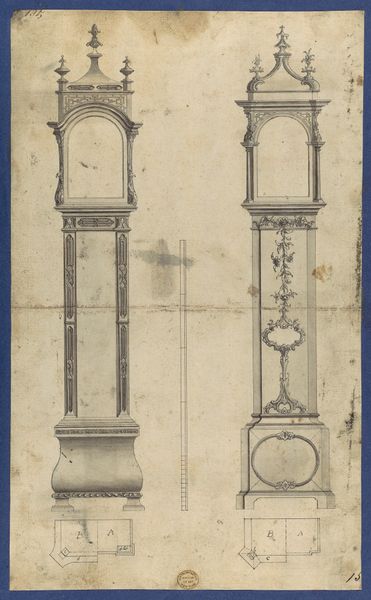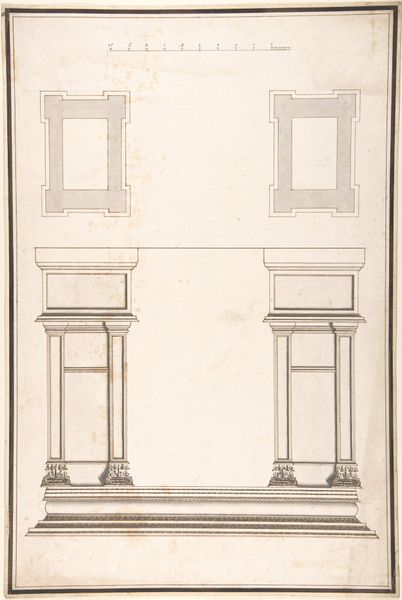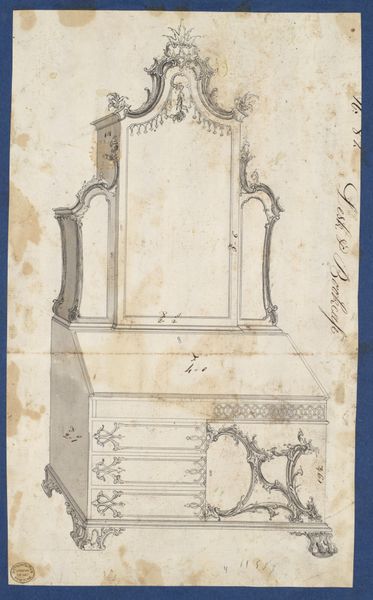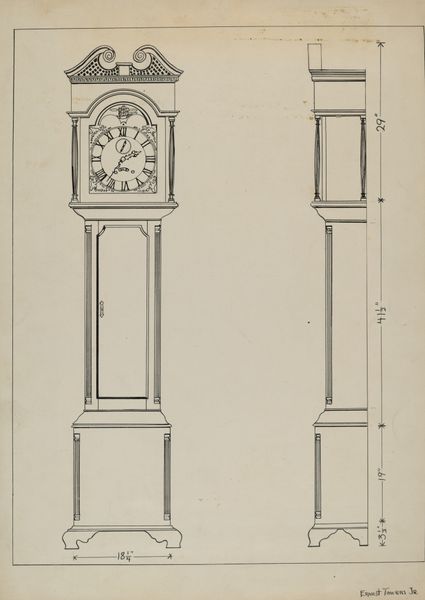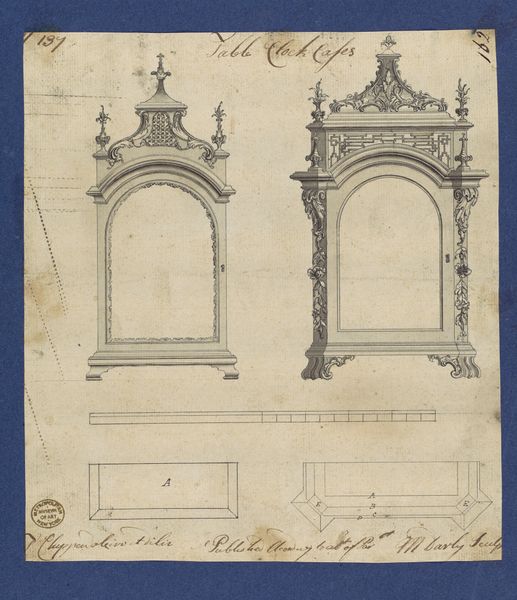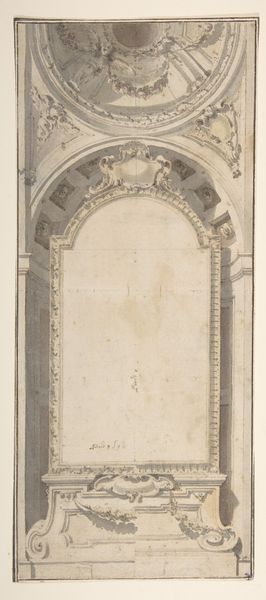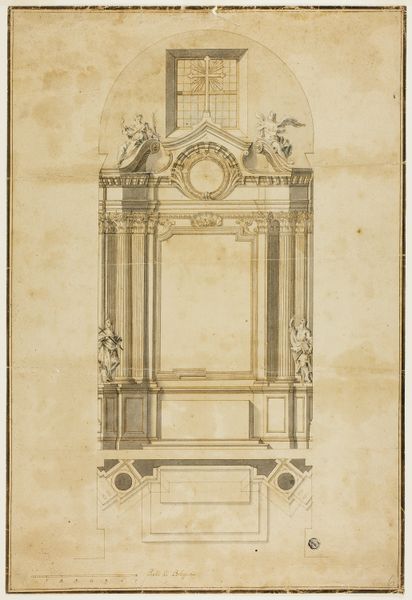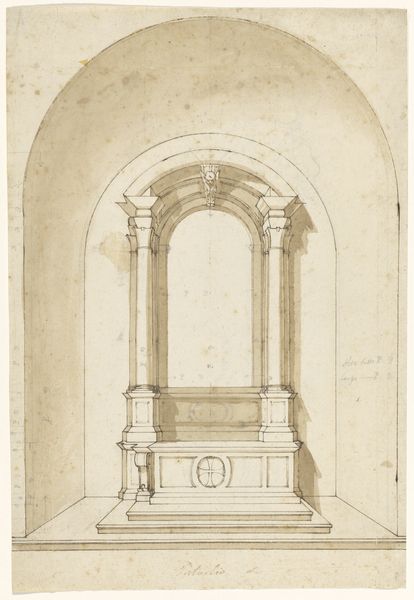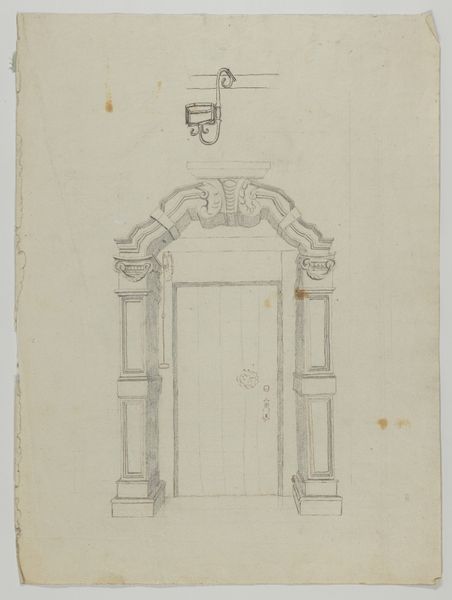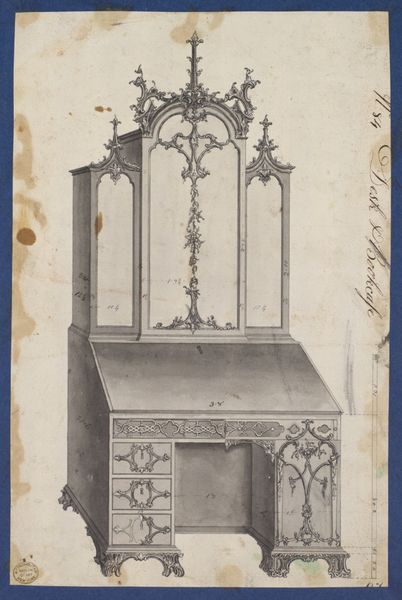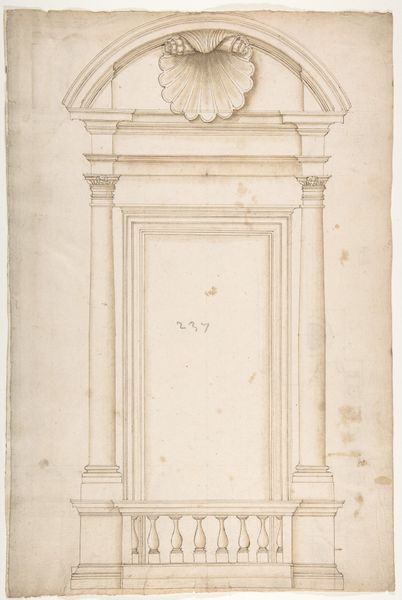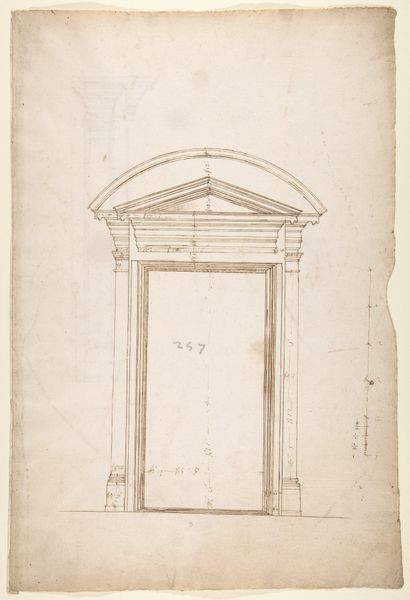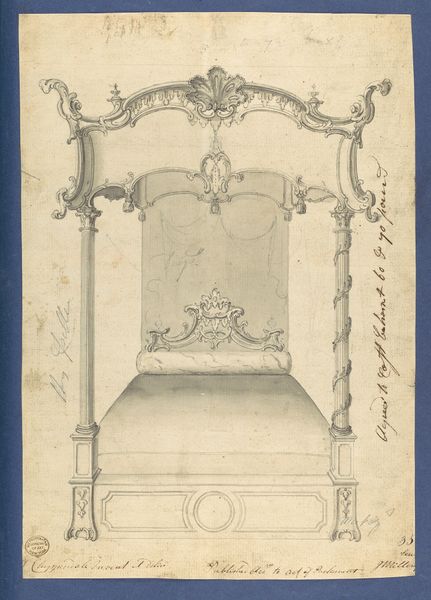
Clock Cases, in Chippendale Drawings, Vol. I 1754
0:00
0:00
drawing, print, architecture
#
drawing
#
baroque
# print
#
line
#
architecture
Dimensions: sheet: 12 3/4 x 8 3/8 in. (32.5 x 21.4 cm)
Copyright: Public Domain
Curator: Alright, so here we have "Clock Cases, in Chippendale Drawings, Vol. I" created around 1754 by Thomas Chippendale, now residing in the Metropolitan Museum of Art. It’s a drawing, actually more of a print really, showcasing Chippendale's vision for clock case designs. What grabs you first? Editor: It's the quiet elegance. Before the clock's ornate ticking or the solemn chime of hours, there's this serene stillness, an expectant hush. Like a dancer paused mid-leap, it suggests potential energy waiting to unfurl into purpose. Curator: Exactly! Chippendale wasn’t just designing furniture, he was contributing to a whole cultural performance of time and domesticity. These designs were made available as pattern books. Think about it: Furniture makers across England and even in the colonies could access these ideas and build their own versions, adapting to local materials and tastes. The dissemination of style! Editor: I love that; it makes it sound like a pre-internet meme! But looking closer, the design feels more complex than simply beautiful. See the contrast in the case on the left versus the one on the right? One very formal with a slight gothic architectural hint; the other a delicate framework ready to be dressed with marquetry. Curator: Chippendale was known for that kind of versatility. The designs incorporate those baroque elements and almost foreshadow a neoclassicism with its use of line and restrained ornamentation. That adaptability made him so successful, and that’s why those are recognized, even today, with that label 'Chippendale Style.' Editor: Makes me consider what future artifacts of design will define our era...what timekeeping vessel might represent us centuries from now? Maybe a sleek smart watch, frozen mid-update? Curator: A funny thought. The idea of something so sleek embodying something beyond planned obsolescence and algorithms. Maybe these clock cases embody some timelessness— both time-keeping and artistic ingenuity. Editor: Indeed. There's a lesson in letting old aesthetics teach us how to see forward!
Comments
No comments
Be the first to comment and join the conversation on the ultimate creative platform.
